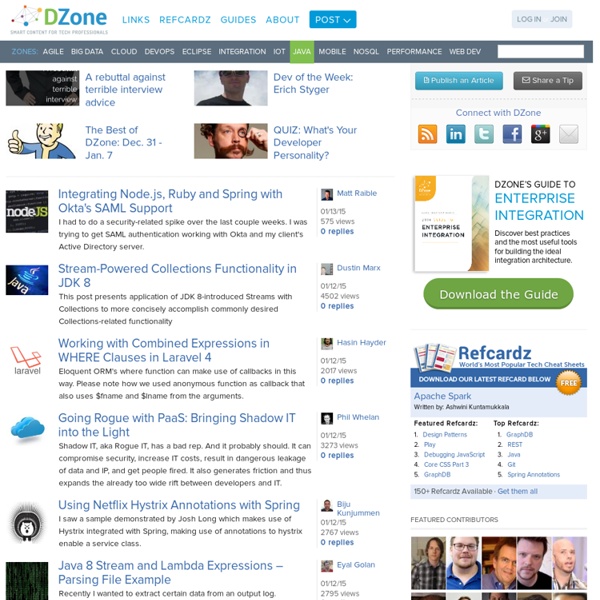



Java Tutorial Java is a high-level programming language originally developed by Sun Microsystems and released in 1995. Java runs on a variety of platforms, such as Windows, Mac OS, and the various versions of UNIX. This tutorial gives a complete understanding of Java. This reference will take you through simple and practical approach while learning Java Programming language. This reference has been prepared for the beginners to help them understand the basic to advanced concepts related to Java Programming language. Before you start doing practice with various types of examples given in this reference, I'm making an assumption that you are already aware about what is a computer program and what is a computer programming language? For most of the examples given in this tutorial you will find Try it option, so just make use of this option to execute your Java programs at the spot and enjoy your learning.
Deep into Java Apprenez à programmer en Java Bonjour à tous ! :D Bienvenue dans mon cours de programmation en Java. C'est un langage très utilisé, notamment par un grand nombre de programmeurs professionnels, ce qui en fait un langage incontournable actuellement. Voici les caractéristiques de Java en quelques mots : Java est un langage de programmation moderne développé par Sun Microsystems (aujourd'hui racheté par Oracle). On peut faire de nombreuses sortes de programmes avec Java : des applications, sous forme de fenêtre ou de console ;des applets, qui sont des programmes Java incorporés à des pages web ; des applications pour appareils mobiles, avec J2ME ;et bien d'autres ! Comme vous le voyez, Java permet de réaliser une très grande quantité d'applications différentes ! Heureusement, ce cours est là pour tout vous apprendre de Java à partir de zéro :) .
Java 7 You are here: Home / Java 7 This page lists the proposed features in Java 7 and information about them. At this point, no Java 7 JSR has been created (although Danny Coward apparently is working on it). Note: I have absolutely no inside information on any of this and you should treat it all as unofficial. The official JDK 7 Development Home page has mailing lists, downloads, source, and more. My most recent summary article on Java 7 can be found on JavaWorld. Features Java 7 Discussion Details Project Jigsaw Project Description: This project is intended to modularize the JDK itself by breaking it into . Blogs: JSR 294 Improved Modularity Support (superpackages) JSR | Early Draft Review | Mailing list Description: This JSR is related to JSR 277. 277 deals with deployment and packaging. 294 focuses more on API modularity at development time. Example: superpackage example.bar.lib { // member packages member package example.bar.lib; // list of exported types export example.bar.lib.Table; Java Kernel Wiki
Club francophone des développeurs Java : actualités, forums avec sondages et débats, cours, faq, blogs, critiques de livres The Coder's Breakfast JH Labs Java Stuff